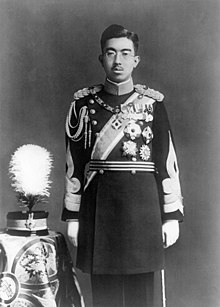Hotel Avenida Palace, the history (part V)
On the 5th part of this history, we share some of the famous and infamous people that stayed in the hotel on the 1st half of twentieth century, from royalty to bankers. You will also learn about the hotel’s “participation” in the Spanish Civil War and in World War II.
The refugees and the spies they all tasted a little bit of the Palace although in the 50’s the hotel started to show a little tired.
“Acknowledged by nobility, and preferred by diplomats and secret agents from all four corners of the world, the hotel was also a channel for knowledge and contacts, a recommended calling card. Alves dos Reis knew that when he chose it as a temporary residence, while the sumptuous residence he had purchased at Príncipe Real was being prepared.
It is said that the famous forger and swindler, who was stuffed with counterfeit 500 escudo bills, moved from the less elegant Metropole Hotel, at the Rossio, by the Avenida Palace, where he lived some time, in 1925. Manuel Teixeira Gomes used it when he came to Lisbon, before going into diplomatic life, and made several references to the hotel in his books.
In 1937, Emperor Hirohito of Japan chose to spend his honeymoon at the hotel. On that same decade, a group of foreign intellectuals established themselves at the Palace, following the invitation of António Ferro. They were: Julles Romain, François Mauriac, Jacques Maritan, Miguel Unamuno, and Wenceslau Fernandez Flores.
During the Spanish civil war, the Palace was filled with refugees, and it was a manoeuvring area for secret agents. Soon afterwards, during the Second World War, spies and conspirators from England, Germany and the United States, crossed paths in the hotel, and decided upon the faith of the world. In fact, it seems that the political class always had a place at the Palace, with some of Salazar’s ministers visiting the hotel regularly. Cardinal Mitsensky also stayed there. Later on, Miterrand would also stay there every time he came to Portugal.
In the 1950’s, the Portuguese high finance remained faithful to the hotel. Cupertino de Miranda selected it when he needed to stay in the capital, and the Espírito Santo family often visited it. There are fewer references from artists, but they did immortalise it. Nureyev, Guilhermina Suggia, and Amália Rodrigues definitively marked it.
On the second half of the twentieth century, Lisbon did not follow the evolution of other European capitals. The railway service did not evolve, and the Santa Apolónia station had begun receiving the international railway traffic sometime before, taking the role of Central Station from the Rossio station. The Palace loses its initial vocation, ages, and starts to show some signs of decadence. In 1963, the Tourism services warn its owners that if they do not do some restoration work, the hotel will lose its ranking.”
The refugees and the spies they all tasted a little bit of the Palace although in the 50’s the hotel started to show a little tired.
“Acknowledged by nobility, and preferred by diplomats and secret agents from all four corners of the world, the hotel was also a channel for knowledge and contacts, a recommended calling card. Alves dos Reis knew that when he chose it as a temporary residence, while the sumptuous residence he had purchased at Príncipe Real was being prepared.
In 1937, Emperor Hirohito of Japan chose to spend his honeymoon at the hotel. On that same decade, a group of foreign intellectuals established themselves at the Palace, following the invitation of António Ferro. They were: Julles Romain, François Mauriac, Jacques Maritan, Miguel Unamuno, and Wenceslau Fernandez Flores.
During the Spanish civil war, the Palace was filled with refugees, and it was a manoeuvring area for secret agents. Soon afterwards, during the Second World War, spies and conspirators from England, Germany and the United States, crossed paths in the hotel, and decided upon the faith of the world. In fact, it seems that the political class always had a place at the Palace, with some of Salazar’s ministers visiting the hotel regularly. Cardinal Mitsensky also stayed there. Later on, Miterrand would also stay there every time he came to Portugal.
In the 1950’s, the Portuguese high finance remained faithful to the hotel. Cupertino de Miranda selected it when he needed to stay in the capital, and the Espírito Santo family often visited it. There are fewer references from artists, but they did immortalise it. Nureyev, Guilhermina Suggia, and Amália Rodrigues definitively marked it.



Amazing blog. I have never seen a blog like this. I have learned many thing from this blog. If you need any kind of hotel and restaurant services in Espiritu Santo Vanuatu then we offer best place to stay. For more info, please visit our website.
ReplyDeleteAccommodation Espiritu Santo Vanuatu
Espiritu Santo Island
Great piece of history, thank you.
ReplyDeleteThis is quality reading. Did I breakfast in the same room as Hirohito and Nureyev?🤣
ReplyDeleteMconsbioad-ru-Pittsburgh Courtney Baart https://wakelet.com/wake/D4-lU2wgX1hvhxBYZhVxj
ReplyDeleteoranunob
DO YOU NEED FINANCES? ARE YOU LOOKING FOR FINANCES? ARE YOU LOOKING FOR FINANCING TO ENLARGE YOUR BUSINESS?via email:bullsindia187@gmail.com
ReplyDelete